
1971
Doug: Welcome back to our second year in what will be our four-month journey through the Bronze Age, as depicted in the magazines of Marvel and DC Comics. Last week we took a peek at 1970 and witnessed the departure of Jack Kirby from the House of Ideas to the Distinguished Competition. In this installment,  we'll continue to see the pay-off for DC as Kirby's fervent imagination created an entirely new universe within the DCU. The year 1971 saw the debut of the NASDAQ, a world record 19-car jump by Evel Knievel, the end of the Ed Sullivan Show, and the death of Jim Morrison, and 18-year old Americans were given the right to vote. Buckle in, kids!
we'll continue to see the pay-off for DC as Kirby's fervent imagination created an entirely new universe within the DCU. The year 1971 saw the debut of the NASDAQ, a world record 19-car jump by Evel Knievel, the end of the Ed Sullivan Show, and the death of Jim Morrison, and 18-year old Americans were given the right to vote. Buckle in, kids!
Doug: I guess I'd say the early victory in this comparison would have to go to Marvel. In the first quarter of 1971, the Squadron Supreme was introduced (Avengers #85) and Captain America's mag became Captain America and the Falcon with issue #134. Sam Wilson had co-starred with his mentor since Captain America #117 (September 1969), and is recognized as Marvel's first African-American super-hero (remember, the Black Panther is an African). In March Marvel published Fantastic Four #108, which contained a partial story penciled by Jack Kirby -- his last work at the company. The story was cobbled together from Kirby's original lay-outs and finished by John Buscema. Over at DC, the big news to begin the year was the demise of green Kryptonite in Superman #233. In a plan to depower the Man of Steel, editor Julius Schwartz and writer Denny O'Neil actually powered Superman up! But by the end of the arc, DC's flagship hero had seen his strength and other abilities reduced by a third.
Over at DC, the big news to begin the year was the demise of green Kryptonite in Superman #233. In a plan to depower the Man of Steel, editor Julius Schwartz and writer Denny O'Neil actually powered Superman up! But by the end of the arc, DC's flagship hero had seen his strength and other abilities reduced by a third.
 we'll continue to see the pay-off for DC as Kirby's fervent imagination created an entirely new universe within the DCU. The year 1971 saw the debut of the NASDAQ, a world record 19-car jump by Evel Knievel, the end of the Ed Sullivan Show, and the death of Jim Morrison, and 18-year old Americans were given the right to vote. Buckle in, kids!
we'll continue to see the pay-off for DC as Kirby's fervent imagination created an entirely new universe within the DCU. The year 1971 saw the debut of the NASDAQ, a world record 19-car jump by Evel Knievel, the end of the Ed Sullivan Show, and the death of Jim Morrison, and 18-year old Americans were given the right to vote. Buckle in, kids!Doug: I guess I'd say the early victory in this comparison would have to go to Marvel. In the first quarter of 1971, the Squadron Supreme was introduced (Avengers #85) and Captain America's mag became Captain America and the Falcon with issue #134. Sam Wilson had co-starred with his mentor since Captain America #117 (September 1969), and is recognized as Marvel's first African-American super-hero (remember, the Black Panther is an African). In March Marvel published Fantastic Four #108, which contained a partial story penciled by Jack Kirby -- his last work at the company. The story was cobbled together from Kirby's original lay-outs and finished by John Buscema.
 Over at DC, the big news to begin the year was the demise of green Kryptonite in Superman #233. In a plan to depower the Man of Steel, editor Julius Schwartz and writer Denny O'Neil actually powered Superman up! But by the end of the arc, DC's flagship hero had seen his strength and other abilities reduced by a third.
Over at DC, the big news to begin the year was the demise of green Kryptonite in Superman #233. In a plan to depower the Man of Steel, editor Julius Schwartz and writer Denny O'Neil actually powered Superman up! But by the end of the arc, DC's flagship hero had seen his strength and other abilities reduced by a third.
Karen: Of course, what's a third of infinity? Superman was SO overpowered by this time, it hardly seems to matter. Even just before Crisis he was still capable of almost anything. I think a lot of DC characters were -and still are, to some degree -so powerful as to render them uninteresting. It's hard to care about such godlike characters, for me at least.
Doug: You are right not only about Superman, but about the entire stable (Batman excepted). I think that's why Doomsday had to be such an engine of destruction -- look at Superman's rogue's gallery. Who is a challenge to the Man of Steel? No one. Kryptonite was so often the go-to enemy, above all humanoid foes. Gets pretty weak after only a short time.
Doug: You are right not only about Superman, but about the entire stable (Batman excepted). I think that's why Doomsday had to be such an engine of destruction -- look at Superman's rogue's gallery. Who is a challenge to the Man of Steel? No one. Kryptonite was so often the go-to enemy, above all humanoid foes. Gets pretty weak after only a short time.
Karen: My first issue of Cap was a "and the Falcon" issue -it was #138, with Spidey guest-starring. So I always thought of Cap and the Falcon as a team.  I didn't understand all the ramifications of the living embodiment of American ideals having a black man as his partner, but looking back, that was not only brave but very progressive!
I didn't understand all the ramifications of the living embodiment of American ideals having a black man as his partner, but looking back, that was not only brave but very progressive!
Doug: If I recall, the first issue of Cap & Falc that I ever saw was #179 with the Golden Archer on the cover.
Doug: So far we've seen a smattering of events, but never a time when it just seemed like all things bountiful hit the racks at once. Well, in the period spanning April-June, 1971, the gates swung open, baby! In April, Namor's love, the Lady Dorma, was murdered by Llyra (Sub-Mariner #33) very shortly after the Crown Prince and his Lady had been pronounced as man and wife. Llyra's dirty deed was accomplished by suffocation -- Dorma was subjected to air, lethal to a water breather. Over at DC, Kirby exploded with three new titles in the Fourth World series: Forever People, New Gods, and Mister Miracle. You don't think three #1's by the King got people's attention?
 I didn't understand all the ramifications of the living embodiment of American ideals having a black man as his partner, but looking back, that was not only brave but very progressive!
I didn't understand all the ramifications of the living embodiment of American ideals having a black man as his partner, but looking back, that was not only brave but very progressive!Doug: If I recall, the first issue of Cap & Falc that I ever saw was #179 with the Golden Archer on the cover.
Doug: So far we've seen a smattering of events, but never a time when it just seemed like all things bountiful hit the racks at once. Well, in the period spanning April-June, 1971, the gates swung open, baby! In April, Namor's love, the Lady Dorma, was murdered by Llyra (Sub-Mariner #33) very shortly after the Crown Prince and his Lady had been pronounced as man and wife. Llyra's dirty deed was accomplished by suffocation -- Dorma was subjected to air, lethal to a water breather. Over at DC, Kirby exploded with three new titles in the Fourth World series: Forever People, New Gods, and Mister Miracle. You don't think three #1's by the King got people's attention?
Karen: Interesting to note that Dorma's death occurred before that of Gwen Stacy, but let's face it, Gwen was Spidey's girl and well-loved by fans. Dorma was much less known. The Kirby explosion was quite noteworthy. It's kind of cool the way the Fourth World Omnibuses (Omnibi??) run the stories not with each title separate and in order, but by order of appearance, so you get them in the same order as they hit the stands.  Kirby was giving the reader different aspects of the Fourth World, with characters on Earth,and stuff going on in Apokolips and New Genesis. I'm not a huge Kirby fan and don't own any issues of the Jack Kirby Collector, but I'm betting Kirby had at least mentally figured out how all these different elements came together.
Kirby was giving the reader different aspects of the Fourth World, with characters on Earth,and stuff going on in Apokolips and New Genesis. I'm not a huge Kirby fan and don't own any issues of the Jack Kirby Collector, but I'm betting Kirby had at least mentally figured out how all these different elements came together.
Doug: In May, there was no let-up. Marvel not only launched it's B&W magazine line with Savage Tales #1 (featuring Conan), but the first of the three "drug issues" that ran in Amazing Spider-Man #'s 96, 97, and 98 was released. Publishing outside the Comics Code Authority, many historians mark this story as the herald before the revision of the CCA -- the impact of which we'll see in the next few years' studies. DC countered with two important Batman tales -- the introduction of Talia in Detective Comics #411 and then her father, Ra's al Ghul, the same month in Batman #232. As I think of the Dark Knight in the Bronze Age, no villain in his entire rogues gallery dominates my thinking like that of the Demon as drawn by Neal Adams.
 Kirby was giving the reader different aspects of the Fourth World, with characters on Earth,and stuff going on in Apokolips and New Genesis. I'm not a huge Kirby fan and don't own any issues of the Jack Kirby Collector, but I'm betting Kirby had at least mentally figured out how all these different elements came together.
Kirby was giving the reader different aspects of the Fourth World, with characters on Earth,and stuff going on in Apokolips and New Genesis. I'm not a huge Kirby fan and don't own any issues of the Jack Kirby Collector, but I'm betting Kirby had at least mentally figured out how all these different elements came together.Doug: In May, there was no let-up. Marvel not only launched it's B&W magazine line with Savage Tales #1 (featuring Conan), but the first of the three "drug issues" that ran in Amazing Spider-Man #'s 96, 97, and 98 was released. Publishing outside the Comics Code Authority, many historians mark this story as the herald before the revision of the CCA -- the impact of which we'll see in the next few years' studies. DC countered with two important Batman tales -- the introduction of Talia in Detective Comics #411 and then her father, Ra's al Ghul, the same month in Batman #232. As I think of the Dark Knight in the Bronze Age, no villain in his entire rogues gallery dominates my thinking like that of the Demon as drawn by Neal Adams.
Karen: We've discussed the drug issues and their importance in the change in the Comics Code before, so I won't belabor the point. We've also reviewed the Batman issues mentioned, and I feel like I might have been a bit harsh in those reviews. When you consider what DC's standard had been, those issues must have seemed like a lightning bolt to the head!
Doug: To close out the spring, Marvel began publication of one of the first epic storylines when the 9-issue "Kree-Skrull War" hit the shelves in Avengers #89. Still referred to today (and soon to be coming to the Avengers cartoon, it would seem), this story has a revered place in Avengers lore. Also worth mentioning was the introduction of the Hulk's love Jarella in Incredible Hulk #140.
Still referred to today (and soon to be coming to the Avengers cartoon, it would seem), this story has a revered place in Avengers lore. Also worth mentioning was the introduction of the Hulk's love Jarella in Incredible Hulk #140.
Doug: To close out the spring, Marvel began publication of one of the first epic storylines when the 9-issue "Kree-Skrull War" hit the shelves in Avengers #89.
 Still referred to today (and soon to be coming to the Avengers cartoon, it would seem), this story has a revered place in Avengers lore. Also worth mentioning was the introduction of the Hulk's love Jarella in Incredible Hulk #140.
Still referred to today (and soon to be coming to the Avengers cartoon, it would seem), this story has a revered place in Avengers lore. Also worth mentioning was the introduction of the Hulk's love Jarella in Incredible Hulk #140.
Karen: The Kree-Skrull War and I have a long history. One of the first comics I ever read was Avengers #92. I still feel that this storyline is one of the greatest in comics. Roy Thomas managed to create something truly epic in scale, and yet anchor it with a love story. Unbelievable. When that is your frame of reference for all other "epics," sadly few can measure up.
Doug: We ain't done yet! Summer was the first sighting of Doc Samson in Incredible Hulk #141 (July), while DC debuted the Swamp Thing (by Len Wein and Bernie Wrightson) in the pages of The House of Secrets #92. Perhaps the most important story of the summer was DC's answer to Stan Lee's drug issues, the release of Green Lantern #85 and the revelation that Roy Harper, aka Speedy of the Teen Titans, had a drug addiction. Suffice it to say that his mentor Oliver Queen (Green Arrow) didn't handle it well... Oh, and Spidey grew some extra arms, too (Amazing Spider-Man #100).
Doug: We ain't done yet! Summer was the first sighting of Doc Samson in Incredible Hulk #141 (July), while DC debuted the Swamp Thing (by Len Wein and Bernie Wrightson) in the pages of The House of Secrets #92. Perhaps the most important story of the summer was DC's answer to Stan Lee's drug issues, the release of Green Lantern #85 and the revelation that Roy Harper, aka Speedy of the Teen Titans, had a drug addiction. Suffice it to say that his mentor Oliver Queen (Green Arrow) didn't handle it well... Oh, and Spidey grew some extra arms, too (Amazing Spider-Man #100).
Karen: I recently read that Adams had wanted to do the drug addiction story sooner, and that they might have beat Marvel to the punch, except for hesitancy on the part of DC. I'm not surprised people at both companies were thinking about it, and not at all surprised that Marvel was the one that took the chance.
Doug: Yep, I read that, too. I think it was in Back Issue recently -- at least that's where I recall seeing it. It was sort of a typical Neal Adams interview. I love Neal, but sometimes he comes across a bit strong.
Doug: As we tail off in 1971, there was big-time momentum toward the new year. Marvel debuted Morbius the Living Vampire in ASM #101 -- obviously Stan's drug issues had put a major chink in the armor of the CCA. It was now fair game for vampires, monsters, ghosts, and all their ilk -- blood for the most part still excluded from our young eyes' viewing. Adams took over the art chores from Sal Buscema in Avengers #93, chapter five in the aforementioned Kree-Skrull War. But the biggest news of the latter part of 1971 may have been the debut of the non-team known as The Defenders (Marvel Feature #1). Comprised of the Hulk, Namor the Sub-Mariner, and Dr. Strange, the Defenders would eventually become a quirky book with a revolving door of characters. And some of them were indeed characters! And lest we seem biased, DC did publish in these months, but to be honest I wouldn't have found any of it very interesting. The company made its way into the realm of magazines with a couple of Kirby books (In the Days of the Mob and Spirit World), and stretched the Code with Weird War Tales #1 and Ghosts #1.
Doug: Yep, I read that, too. I think it was in Back Issue recently -- at least that's where I recall seeing it. It was sort of a typical Neal Adams interview. I love Neal, but sometimes he comes across a bit strong.
Doug: As we tail off in 1971, there was big-time momentum toward the new year. Marvel debuted Morbius the Living Vampire in ASM #101 -- obviously Stan's drug issues had put a major chink in the armor of the CCA. It was now fair game for vampires, monsters, ghosts, and all their ilk -- blood for the most part still excluded from our young eyes' viewing. Adams took over the art chores from Sal Buscema in Avengers #93, chapter five in the aforementioned Kree-Skrull War. But the biggest news of the latter part of 1971 may have been the debut of the non-team known as The Defenders (Marvel Feature #1). Comprised of the Hulk, Namor the Sub-Mariner, and Dr. Strange, the Defenders would eventually become a quirky book with a revolving door of characters. And some of them were indeed characters! And lest we seem biased, DC did publish in these months, but to be honest I wouldn't have found any of it very interesting. The company made its way into the realm of magazines with a couple of Kirby books (In the Days of the Mob and Spirit World), and stretched the Code with Weird War Tales #1 and Ghosts #1.


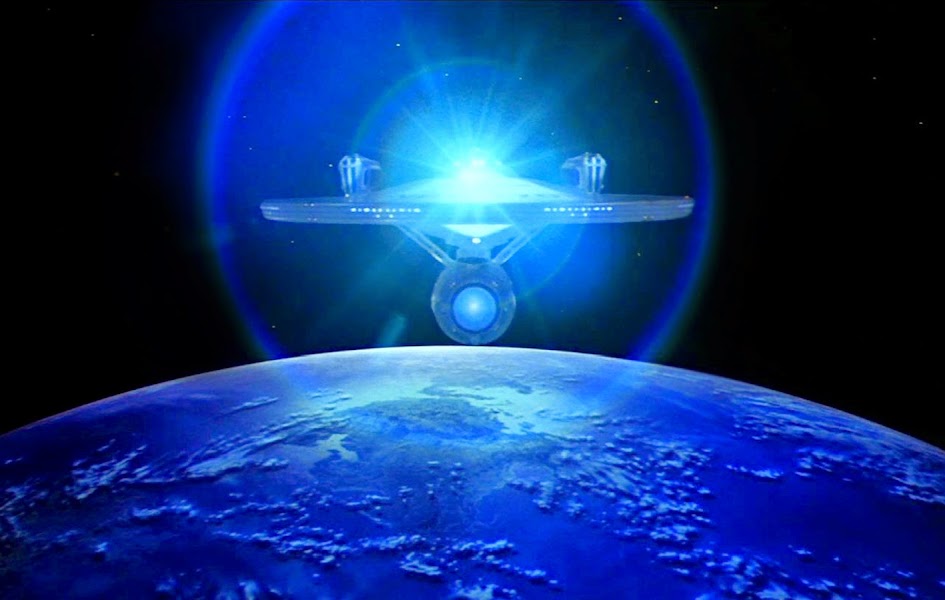

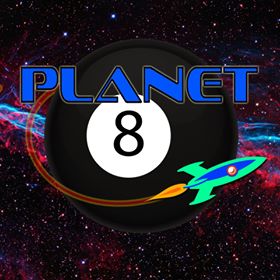
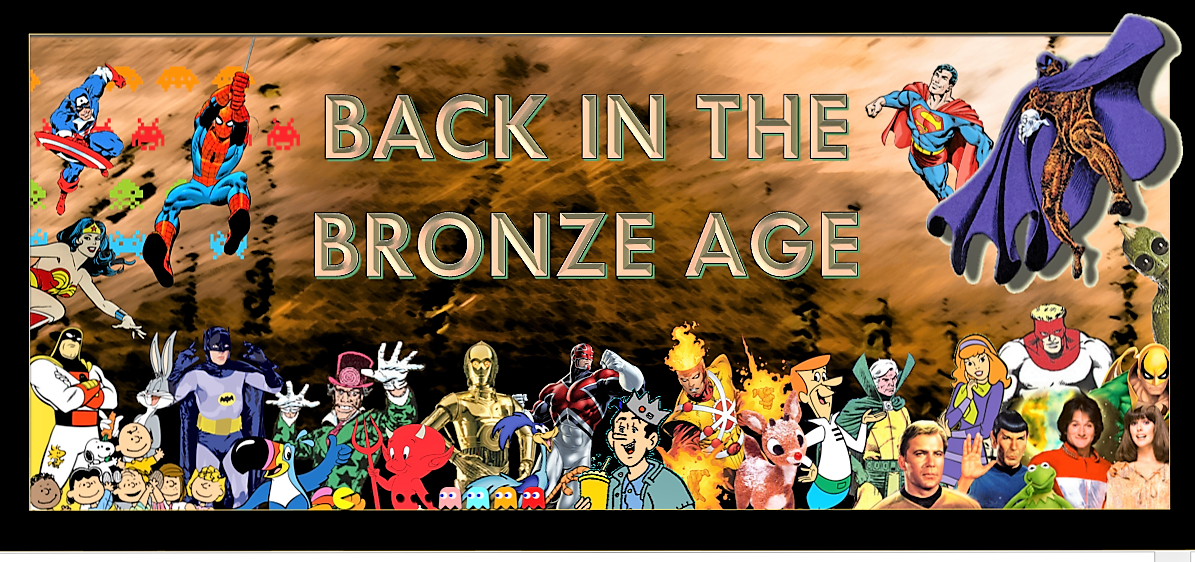
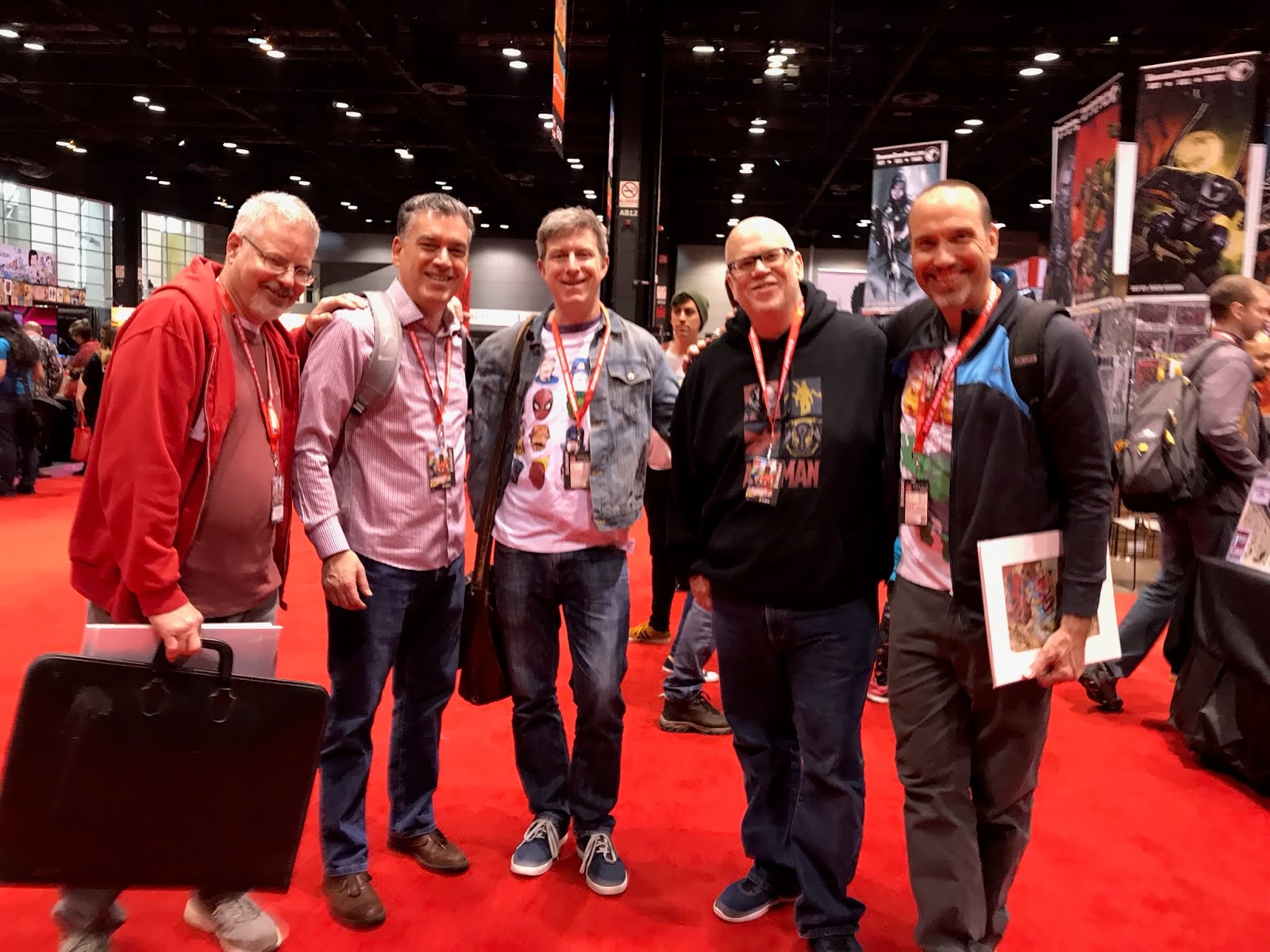

































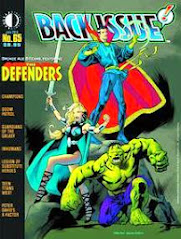
4 comments:
I just finished up all of Jim Shooter's original run writing the Legion of Super-heroes, and was fascinated again and again by how much latitude Shooter (and, indeed, both previous and later writers) had to put Superboy in 'real' peril against foes who were depicted as being vastly more powerful than him (the Sun-eater, Mordru and Validus being just three examples, but also Nemesis Kid) or at least powerful enough to make things interesting. It's one of the appeals of the LSH for me -- a Superboy who has to work at things, and who's not guaranteed victory every time out.
I haven't read a lot of silver age DC, but from what I have read, Legion is far and away the most interesting! Issues of JLA from the 60s featured heroes with interchangeable personalities. The Legion seemed to be different, as you say Jonathon.
Karen
I wasn't buying comics regularly yet in '71, but I got a few including a new very well-worn copy of Spider-Man #98, the finale of the Goblin/drug trilogy. As a 9 year old kid at the time, I had no idea how significant or radical that storyline was, but I found it very compelling. And I wasn't really bothered by the fact that I didn't have the other two parts of the story -- more often I'd miss the conclusion of a storyline, which was much more frustrating. I loved that Neal Adams cover to the Defenders debut -- I didn't get Marvel Feature #1, but I saw that cover in the ad, and damned, I wanted that! Of course, I finally did read the story itself, in the Defenders Treasury Edition, with rather scratchy art by Ross Andru. As for the Kree-Skrull War, I entirely missed that, but I remember reading references to it in the letters pages and in Jim Starlin's run in Captain Marvel. Had to wait over a decade before I had the opportunity to read it for myself.
I felt about ol' Supes the same way you did, Karen. He was just too powerful and his stories pretty bland by my estimation. Thor and the Hulk were also very powerful, but at least the Marvel scribes still found ways to make them interesting (at least for me). Perhaps the main thing was I'd read so many DC stories by then that were just plain ridiculous and dumbed down, while Marvel seemed more respectful of the intelligence of their readers.
BTW, having read O'Neil/Adams Green Lantern/Green Arrow stories in reprints in the '80s, one big difference I noted between their big drug story and Spidey's was that it appeared Roy Harper had been out of the picture for a while, at least in this series, then suddenly he pops up and in the same story he turns out to be a junkie, while over in Spider-Man, Harry had been a regular part of Spidey's supporting cast, his roommate even. Overall, Harry's troubles felt more real to me than Roy's (I finally read that full story when it was reprinted in Marvel Tales ages later). Perhaps part of the problem with the GL/GA stories was that the supporting cast was pretty minimal, while Spider-Man had possibly the largest supporting cast of regular people of any superhero comic, which was a large part of what made me want to keep reading his stories.
Neal Adams said in an interview in Will Eisner's Quarterly in the 1980's that he wanted to do the drug addiction story, but was told that it could not pass the Comics Code. Then Marvel published Spider-Man #96-98 without the CCA seal. Then the Code was amended and the Speedy story was allowed.
Post a Comment